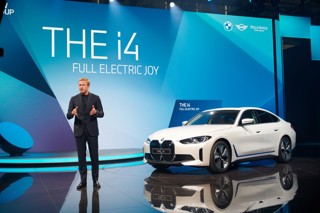The cost of a breakdown for an electric vehicle (EV) is 2.7 times more than that of an internal combustion engine (ICE) car, new research suggests.
Analysis of more than 2,500 EVs over four-and-a-half years by Total Motion found that, on average, breakdown costs for a petrol or diesel car were £221 per incident (excluding accidents) compared with £596 for an EV.
The number of breakdowns, on average, was also higher for a plug-in vehicle – 3.1 incidents for an EV versus 1.9 for an ICE vehicle.
However, the research from the fleet management company shows that service, maintenance and repair (SMR) costs for EVs are, on average, approximately 27% lower than that of a petrol or diesel car.
The firm, which has been managing electric and alternative fuel vehicles since 2004, monitored reliability, downtime costs and breakdown frequency, comparing EVs with ICE cars in a number of key areas based on 36 months or 75,000 miles.
These included: SMR costs; number of breakdowns based on 36/75k; fleet insurance costs; downtime; parts availability; repair times; and dealer/repairer performance.
Between June 2017 and December 2021, the driving history of more than 2,500 EVs - Tesla, Porsche, Nissan, Renault, Audi and Mercedes - were scrutinised by the Total Motion team.
It found that the average costs involved in replacing a windscreen were six times that of an ICE vehicle. The average ICE replacement being £397 compared to an average of £2,382 for an EV.
Total Motion said the cost ratio was so different due to technology, such as ADAS, being used in the latest windscreens.
However, it could be argued that's not down to the car in question being an EV as ICE vehicle windscreens are also employing similar technologies.
The average dealer satisfaction score for ICE vehicles, meanwhile, was 84% for ICE vehicles and 53% for EVs.
The Total motion team also compared miles per gallon (MPG) and range performance. Using the combined published MPG, the ICE vehicle achieved 83.6% while the EV achieved 74.1%.
In terms of insurance, Total Motion found insuring an EV is approximately 19% higher than that of an ICE equivalent, and in of in terms of vehicle off road (VOR) days including accidents, the average number of EV VOR days was 15.3 compared to 2.8 for an ICE vehicle.
Simon Hill, Total Motion director, said: “Whilst the clamour for EV vehicles is gathering momentum, particularly with generous company car tax breaks and the 2030 deadline for ceasing production of new petrol and diesel cars in the UK, we decided to carry out this research on behalf of our fleet customers.
“The findings of the study lead us to conclude that the transition to EV for many fleets is being done far too early, and that this will have significant cost and operational implications.”
Hill said: “Our long-term view is that ICE will continue to reduce in volume and EV and plug-in hybrid (PHEV) vehicles will continue to increase, with a view to hydrogen or hydrogen plug-in being challengers to EV within 15-20 years.”
However, Total Motion's findings do not tally with the experience of some fleets. Over a four-year operating cycle, Siemens found a lot of EVs to be cheaper than diesel across most comparable models.
Wayne Warburton, Siemens head of UK Mobility Services, told Fleet News last year: “What’s making the difference is the maintenance and fuel. As leasing companies get a better understanding of how much cheaper they are to maintain, they are no longer loading the SMR from a risk point of view.
“The main driver, however, is the fuel savings on offer to the employee and the business and by moving to a TCO model this is very apparent in making an EV the sensible choice.”
> Interested in comparing electric vehicle data? Check out our EV tool.
> Interested in ensuring the efficient use of EVs. Check out our dedicated editorial sections: Insight & policy | EV news | Charging & infrastructure | Costs & incentives | Benefit-in-kind | EV case studies | EV road tests
























Login to comment
Comments
No comments have been made yet.